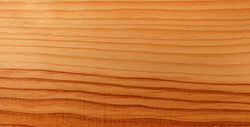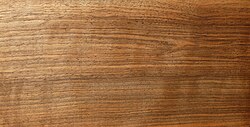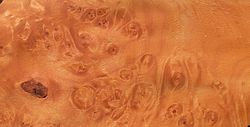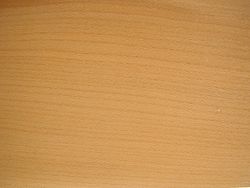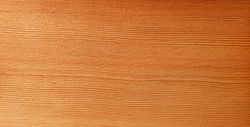AY Honors/Wood Handicraft/Answer Key
1. Identify at least five common kinds of wood, such as pine, walnut, oak, and cedar.
Pine
Pines is among the most commercially important genus of tree, valued for its timber and wood pulp throughout the world. Pine wood is widely used in high-value carpentry items such as furniture, window frames, paneling and floors. Pine is readily available at commercial lumberyards, being among the least expensive forms of lumber. Pine is light yellow to white with a reddish tinge. It darkens to an orange tint with age. The wood is soft and easily shaped with both hand and power tools, making it a very popular choice for wood craft.
Walnut
The Persian Walnut, and the Black Walnut and its allies, are important for their attractive timber, which is hard, dense, tight-grained and polishes to a very smooth finish. The colour ranges from creamy white in the sapwood to a dark chocolate colour in the heartwood. When kiln-dried, walnut wood tends toward a dull brown colour, but when air-dried can become a rich purplish-brown. Because of its colour, hardness and grain it is a prized furniture and carving wood. Walnut burls (or 'burrs' in Europe) are commonly used to create bowls and other turned pieces. Veneer sliced from walnut burl is one of the most valuable and highly prized by cabinet makers and prestige car manufacturers.
Walnut is an expensive lumber not usually available at the usual lumberyards (Home Depot, Lowes, etc). One generally has to buy it at a specialty hardwood lumber store.
Oak
Oak has very attractive grain markings, particularly when quarter-sawn. Wide, quarter-sawn boards of oak have been prized since the Middle Ages for use in interior paneling of prestigious buildings such as the debating chamber of the British House of Commons in London, England, and in the construction of fine furniture. Today oakwood is still commonly used for furniture making and flooring, timber frame buildings, and for veneer production.
Oak is a very hard, strong, and durable wood. It is not easily worked when cured, and is thus not a good choice for the beginning wood crafter. However, in the hands of a skilled craftsman, it is an excellent choice, holding carving detail well over very long periods of time.
Cedar
The fine-grained, soft brittle pinkish- to brownish-red heartwood is fragrant, very light and very durable, even in contact with soil. Because of its rot resistance the wood is used for fence posts. Because the aromatic wood is avoided by moths it is in demand as lining for clothes chests and closets, often referred to as cedar closets and cedar chests. It was once a premier wood for pencils.
Cedar is available at some lumberyards, but is often located in a section of the store reserved for outfitting closets. It is more expensive than pine, but not out of reach of the budget-conscious Pathfinder. Its aroma alone make it well worth the added expense compared to pine, and it works just as easily. It is an excellent choice for the beginner.
Maple
Some of the larger maple species have valuable timber, particularly Sugar Maple in North America, and Sycamore Maple in Europe. Sugar Maple wood, often known as "hard maple", is the wood of choice for bowling pins, bowling alley lanes, pool cue shafts, drums, and butcher's blocks. Maple wood is also used for the production of wooden baseball bats, though less often than ash or hickory.
Some maple wood has a highly decorative wood grain, known as flame maple and quilt maple. This condition occurs randomly in individual trees of several species, and often cannot be detected until the wood has been sawn, though it is sometimes visible in the standing tree as a rippled pattern in the bark.
Maple is a very hard wood, and while that makes it difficult to work with hand tools, it also makes it a very good choice when fine carving details are desired. Because of its working difficulty, it is a wood better left to the experienced craftsman rather than the beginner.
Fir
Douglas-fir wood is used for structural applications that are required to withstand high loads. It is used extensively in the construction industry. Like pine and cedar, it is a soft, easily worked wood.
Cherry
Ash
Beech
